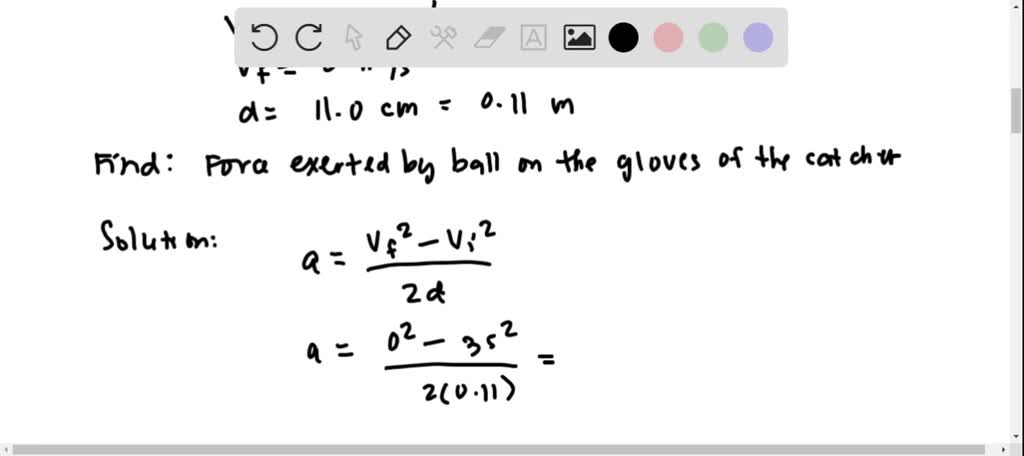What Was The Average Force Applied By The Ball On The Glove?
(II) A 0.140-kg baseball 35.0 m/s traveling strikes the catcher's mitt, which, in bringing the ball to rest, recoils backward 11.0 cm. What was the average force applied by the ball on the glove?


Get the answer to your homework problem.
Try Numerade Free for 7 Days

Mindanao State University- Iligan Institute of Technology
Answer
(II) A 0.140-kg baseball 35.0 m/s traveling strikes the catcher's mitt, which, in bringing the ball to rest, recoils backward 11.0 cm. What was the average force applied by the ball on the glove?
Discussion
You must be signed in to discuss.
Video Transcript
good day. The topic is about Newton's second law of motion, which states that force is equal to mass times acceleration where F. Is forcing you to learn. M is the mass in kilograms and a is the acceleration in meters per second squared. If concept force is applied on the object, then the object must be accelerating at concentrate as well so that we can use the following cinematic equation to solve for the concept acceleration rate. So we have V. F squared minus V squared over two D. Where VF is the final velocity in meters per second. V. I. Is the initial velocity in meters per second and the is the displacement in meters. Now, let us suppose we have a baseball which masses .140 kg is being launched at the speed of 35 m/s. It's it's caught by the catcher and brought it to a stop after the catcher's hand request over a distance of 0.11 or that's a 0.11 m or that's 11 centimeter. So in this case we wish to find the force that is exerted by the boil on the gloves of the catcher. So let us start by solving for the acceleration rate, assumed this is constant. So we have a equals V. F squared minus V. I. Squared over duty. This is equal to zero squared minus The initial uh speed, which is 35 m/s. So that's 35 squared over two times .11, solving this one gives us negative 5568 m per second squared, that's the boil is being decelerated. That's the implication of negative year at the rate of 5568 m per second squared by the bull by the catcher's gloves, so that the catcher exerts a force on the baseball as .140 times negative 5568. Or is this equal to -779, earned its -7. 180 neutral. The negative sign here indicates that the force exerted by in the catcher on the boil Acts in the direction opposite to where the ball is heading. Now by Newton's 3rd law of motion. The force that they catcher exerts on the boil must also be the same amount of force that the boy experts on the culture only that they are in opposite direction. Thus the force of the boy on the catcher must be also equal to 7:18- 20. But this time it's positive indicating that the force is going in the same direction as where the ball is heading. So I hope this helps
What Was The Average Force Applied By The Ball On The Glove?
Source: https://www.numerade.com/ask/question/ii-a-0140-kg-baseball-350-ms-traveling-strikes-the-catchers-mitt-which-in-bringing-the-ball-to-rest-recoils-backward-110-cm-what-was-the-average-force-applied-by-the-ball-on-the-glove-2/
Posted by: kellydedge1977.blogspot.com

0 Response to "What Was The Average Force Applied By The Ball On The Glove?"
Post a Comment